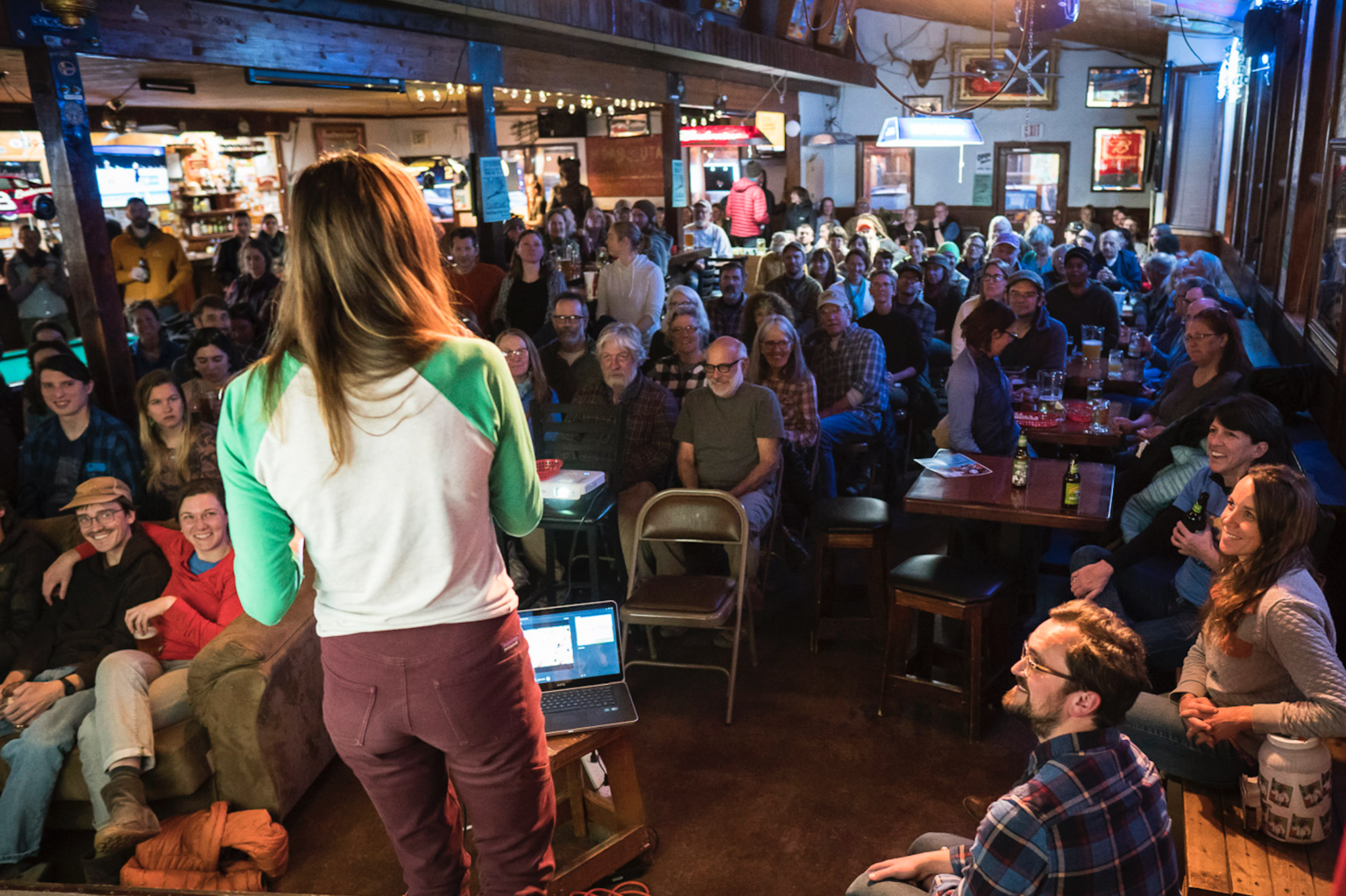Some information may be outdated.
One of the Moab community’s favorite winter events is returning for the season: Science Moab on Tap, the lecture series hosted by Science Moab which features scientists doing research in the Moab area. This year, there will be three talks, one each in December, January, and February.
“We’re always on the lookout for scientists who can just talk like normal people, who can deliver information in understandable and digestible and fun ways,” said Kristina Young, the founder of Science Moab. The Science Moab on Tap event is meant to further the Science Moab mission of connecting more people to science being done in Southeast Utah and the Colorado Plateau: What’s more accessible than a casual chat about cool science over a pint of beer?
“It’s always relevant to learn more about the place that you’re in,” Young said.
Josh Lively will kick off this year’s series on Wednesday, Dec. 7, with a talk titled “Up a River with Big Paddles: A Freshwater ‘Sea Turtle’ from the Cretaceous of Southern Utah.” Lively is a curator of paleontology at the Utah State University Eastern Prehistoric Museum in Price who specializes in vertebrates from the Cretaceous Period, with an emphasis on marine lizards and freshwater turtles.
“Thinking about the deep past, thinking about understanding living things and how they survived in deep geologic time, is so relevant to thinking about today and how things are always changing so rapidly,” Young said. “[Lively’s research] is just one part in a long story of landscape and life evolution.”
The next talk will occur on Wednesday, Jan. 18 with Brooke Osborne, an assistant professor at USU Moab in the Environment and Society Department—Osborne joined the faculty in the fall 2022 semester. Osborne’s On Tap talk is titled “Drylands: the Sneaky Powerhouse of the Global Carbon Cycle.” She’ll discuss how carbon moves through ecosystems, and Young said the talk will touch on different components of how deserts work.
Young said Osborne’s talk won’t be a “depressing climate change talk,” rather, it’ll introduce people to the carbon cycle, and help people understand what carbon is and how it’s related to the desert.
“Her talk is going to empower people to understand how landscapes are involved with carbon, and how our actions affect how much carbon exists in these landscapes,” she said.
The third and final event will take place on Wednesday, Feb. 8, with Riley Finnegan, a fifth-year Ph.D. candidate at the University of Utah. Her research concerns vibration damage of rock landforms, and her Science Moab on Tap talk is titled “Wiggly Jiggly Arches and Towers: How these Landforms Move and Groove and Ways Human Activity Affect Them.” Finnegan’s research shows that arches and desert landforms actually move, and she’ll show the technology she’s used to measure the vibrations of those landforms.
“The movement of these things that we all love to look at, to climb on, to interact with, that are such a defining part of Moab, is such an enticing thought,” Young said. “There’s a lot to learn about how humans could possibly be affecting the vibrations of these huge geologic features. I don’t even know the answer, so I’m really excited to figure it out.”
This year’s event is organized a bit differently than in the past: it’s returning to Woody’s Tavern, is sponsored by the Canyonlands Natural History Association, and participants can reserve a front-row seat with a donation to Science Moab ($35 for a front row seat at one talk; $50 for a seat at all three talks. More information is available at www.sciencemoab.org!).
Each event is free, but donations are appreciated, Young said. Doors will open at 5:30 p.m. with the talk running from 6 to 7 p.m.
Appreciate the coverage? Help keep local news alive.
Chip in to support the Moab Sun News.





